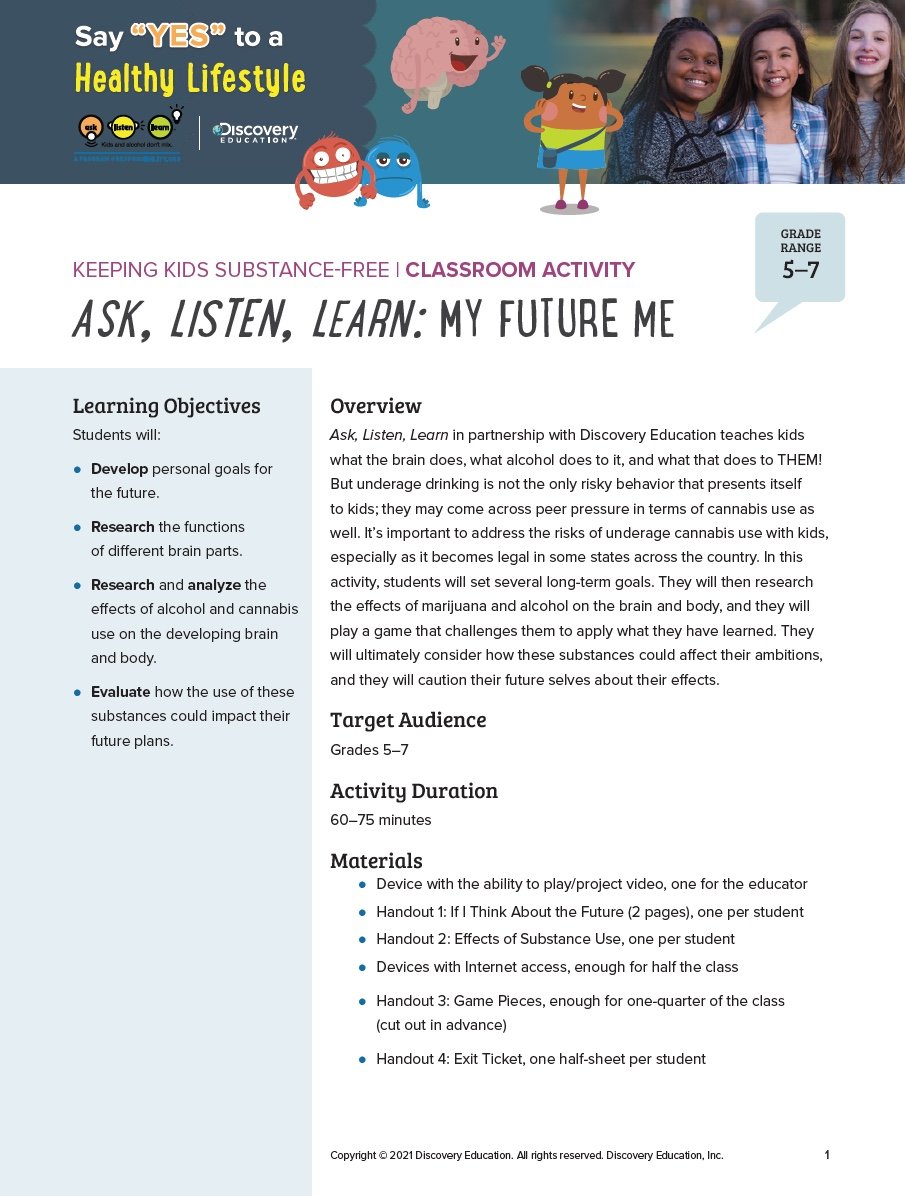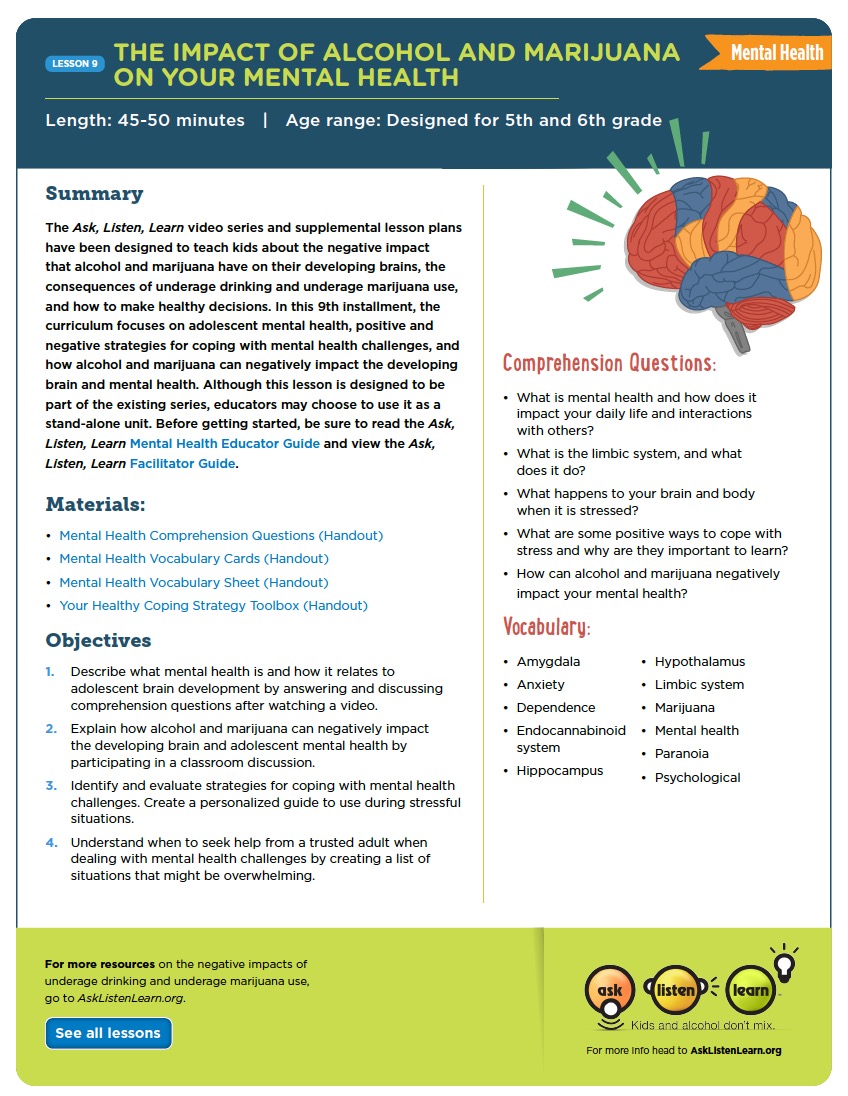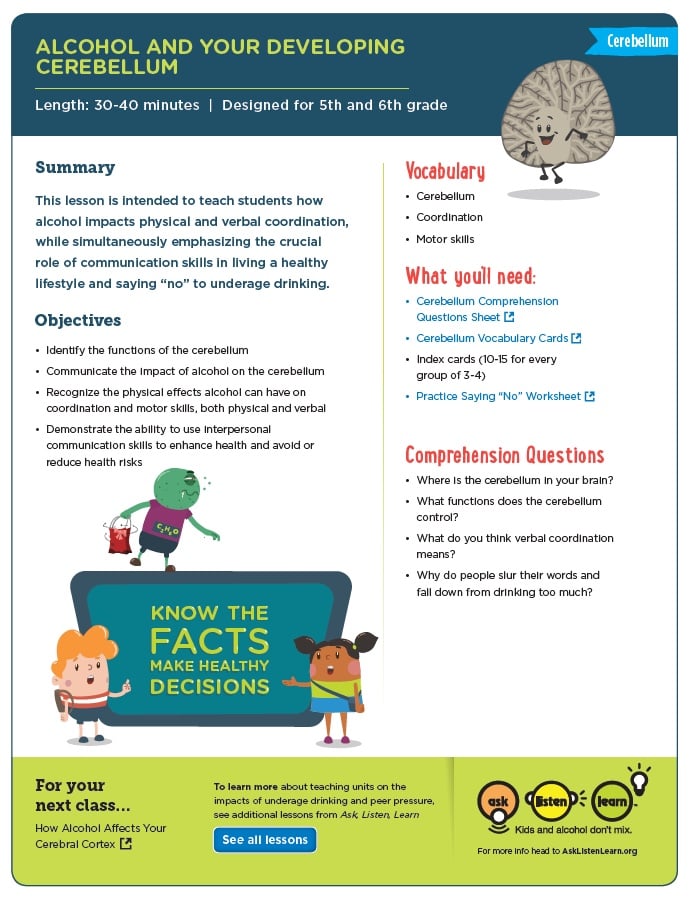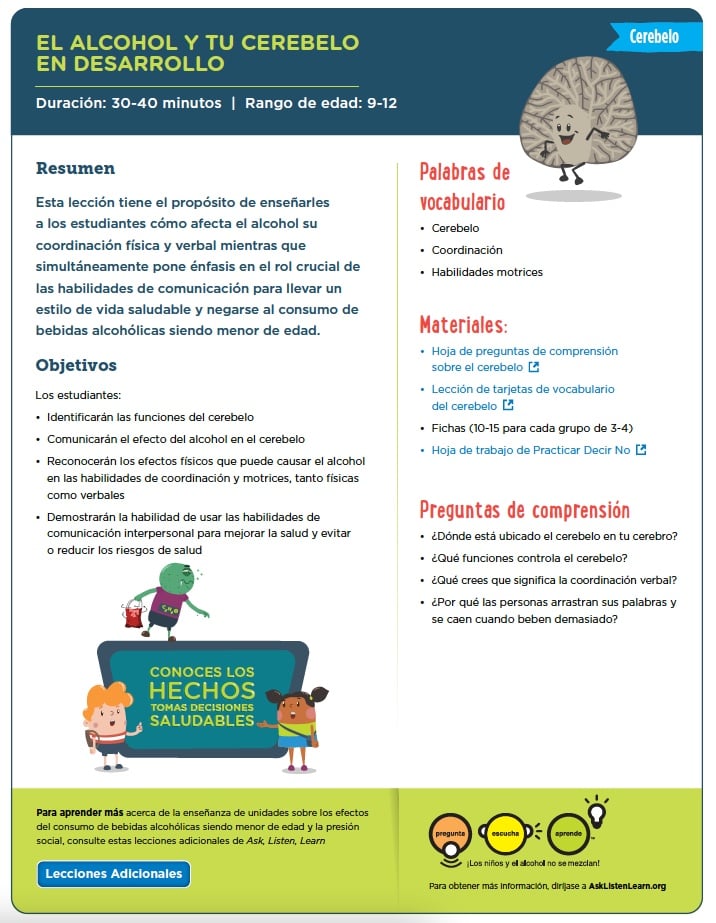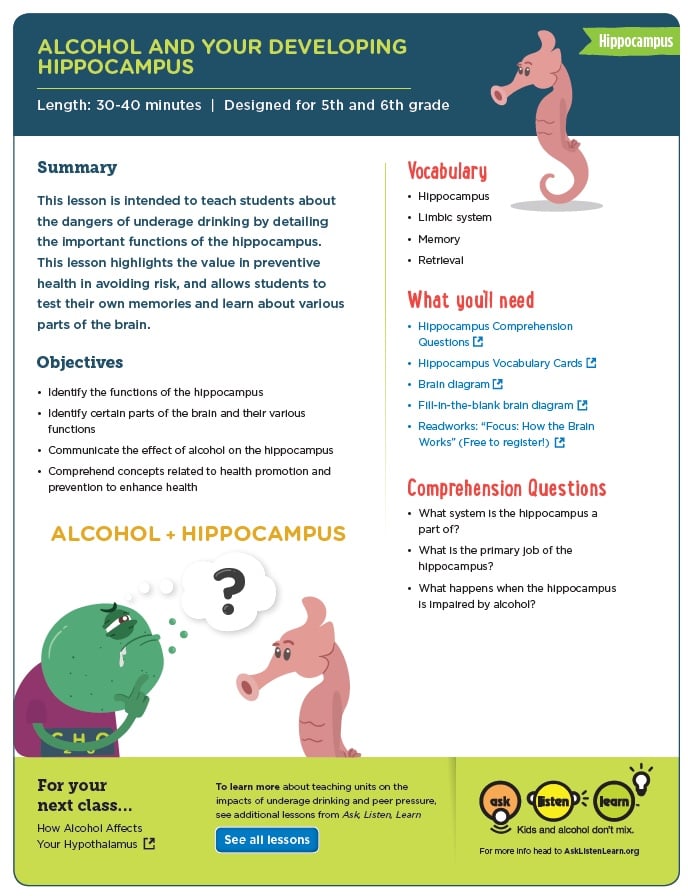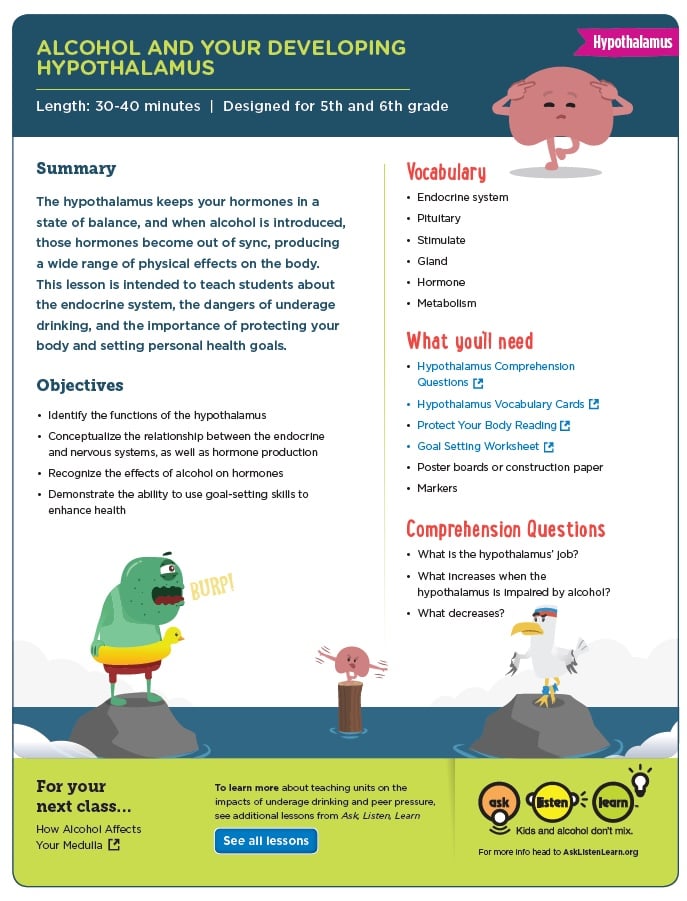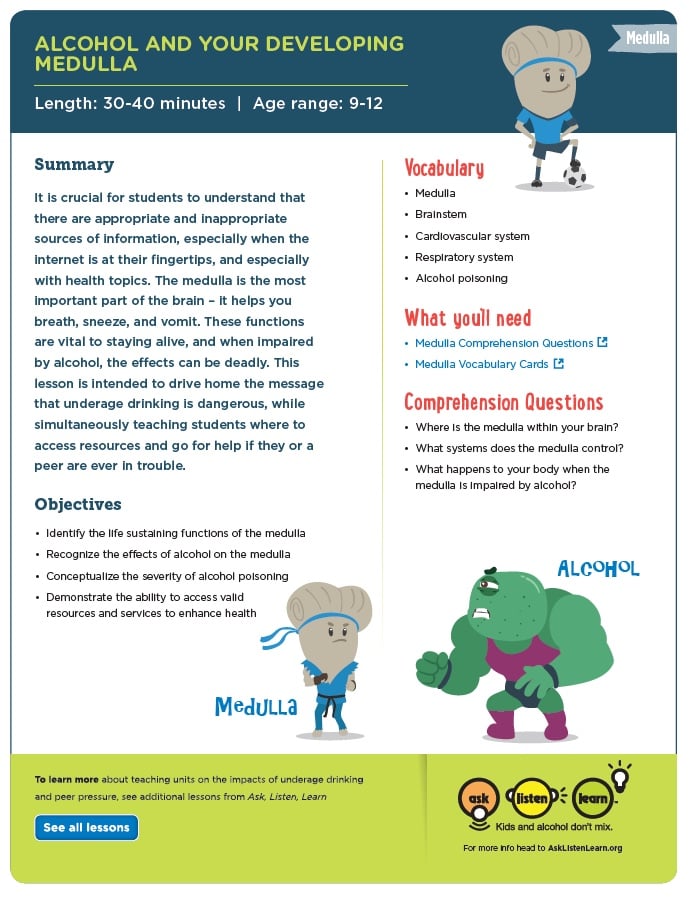About This Lesson
Ask, Listen, Learn in partnership with Discovery Education teaches kids what the brain does, what alcohol does to it, and what that does to THEM! But underage drinking is not the only risky behavior that presents itself to kids; they may come across peer pressure in terms of cannabis use as well. It’s important to address the risks of underage cannabis use with kids, especially as it becomes legal in some states across the country.
In this activity, students will set several long-term goals. They will then research the effects of marijuana and alcohol on the brain and body, and they will play a game that challenges them to apply what they have learned. They will ultimately consider how these substances could affect their ambitions, and they will caution their future selves about their effects.
Students will:
- Develop personal goals for the future.
- Research the functions of different brain parts.
- Research and analyze the effects of alcohol and cannabis use on the developing brain and body.
- Evaluate how the use of these substances could impact their future plans.
Time required:
- 60-75 minutes
Student Materials
- Device with the ability to play/project video, one for the educator
- Handout 1: If I Think About the Future (2 pages), one per student
- Handout 2: Effects of Substance Use, one per student
- Devices with Internet access, enough for half the class
- Handout 3: Game Pieces, enough for one-quarter of the class (cut out in advance)
- Handout 4: Exit Ticket, one half-sheet per student





